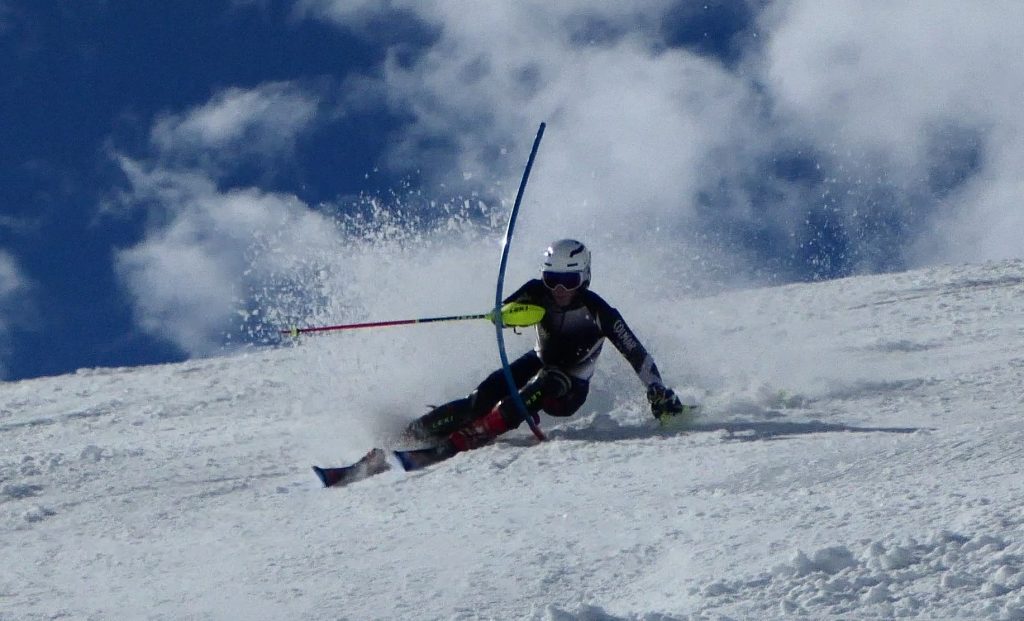Skating
Skating (on the flat) was used to introduce the idea of moving the centre of mass – and allowing it to fall forward and to the inside of the supporting ski – due to gravity – with the supporting ski gripping. This is the most efficient way to skate but it is also the true basis of skiing.
Skiing should really be learned with the skis diverging and through the use of skating turns…
Modified SnowPlough
People who are never taught to snowplough simply never do it spontaneously – because it’s not natural. However – when you are taught to snowplough it’s very difficult to stop doing it – so we would have to accept using the snowplough here and modify it to suit our purposes.
Normal ski instruction teaches people to transfer the weight to the “outside” ski – by moving the centre of mass outward over that ski – and “balancing” on that ski. All of this is totally wrong and based on a huge misinterpretation of physics. Skiing is based on “disequilibrium” or “Newton’s Second law”. What this boils down to is that you must move the centre of mass in the direction you want to turn – this is what skis are designed to respond to. We can do this in a plough – moving the centre of mass towards the “inside” ski (not the outside). The inside ski then side slips into the turn acting as a brake and controlling the speed. Effectively, weight always ends up on whichever ski is downhill of the skier and the ski always acts as a brake – giving proper control. The skier only has to focus on directing the centre of mass towards the centre of the turn
Lower Ski Stem
Later on we modified the the plough again – traversing with skis parallel across the hill then stemming the lower ski downhill (instead to pushing the tail of the upper ski uphill) – then adding a push of the centre of mass into the turn from the upper ski.
This worked quite well because it’s important to avoid pushing the upper ski outward and this is a way of using the plough without doing so.
Dynamics
Parallel skiing is a consequence of dynamics – functioning exactly the same way as on a bicycle. You need to have some forward speed then you allow the centre of mass to fall to one side – the ski/bicycle changes shape beneath you and cuts in front of your trajectory lifting you back up again – creating a turn in the process. If you do not actively “fall” you cannot ski.
The Modified Plough has already trained the skier to move the centre of mass in the right direction – now we require a bit more speed and a confident acceleration/push of the centre of mass in the right direction – then the turn is parallel.
Stand on the balls of the feet – pressuring the front of the ski boots – so the upright body is perpendicular to the slope and not stuck standing in the vertical plane. Just like with a bicycle the front of the ski is what drives the turn and cuts in front of the skier’s trajectory.
Here is a trainee below with a large, developed “dynamic range”…


